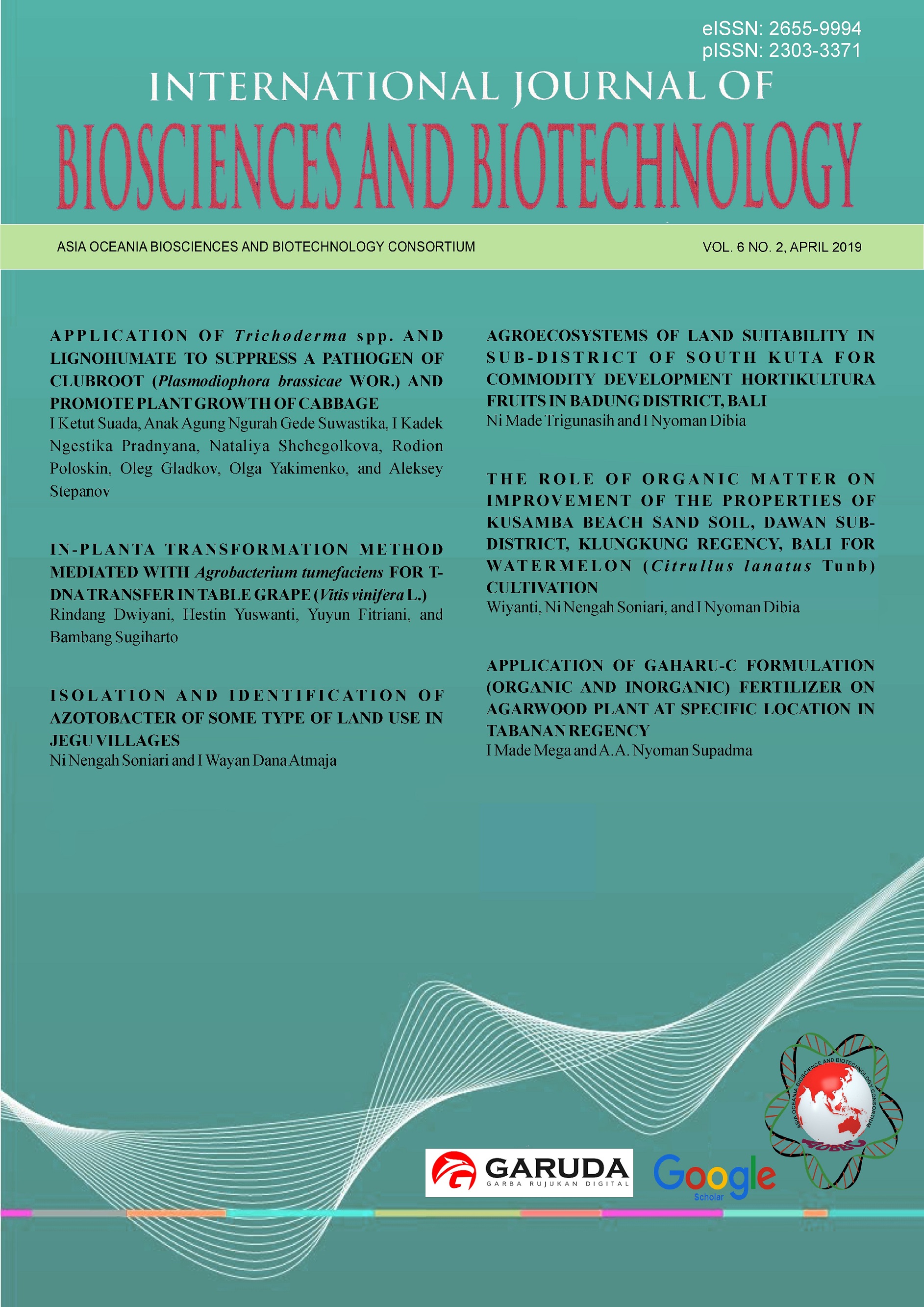AGROECOSYSTEMS OF LAND SUITABILITY IN SUB-DISTRICT OF SOUTH KUTA FOR COMMODITY DEVELOPMENT HORTIKULTURA FRUITS IN BADUNG DISTRICT, BALI
Abstract
This study aims to: (1) to know the suitability of the land for the development of several fruit horticultural commodities in the Sub-district of South Kuta, (2) determine the suitability of land in agroecosystem and its limiting factors, (3) provide ecommendations for land management in the study area. The study used a field survey method with the determination of observation samples carried out in a stratified purposive sampling with land units as the strata. Land quality/characteristics as a determinant of land suitability observed include: annual mean temperature, water availability; rooting media; availability of oxygen; nutrient retention, CEC, BS, pH, and organic matter; nutrients available; erosion; flood hazard; land preparation. Land suitability assessment is done by matching the land quality with the growing requirements for the plants evaluated. The results showed that the actual land suitability for food crops of fruit horticulture (citrus, mango, starfruit, banana, sapodilla, grape, klengkeng, papaya, grain guava, guava, jackfruit, soursop, avocado, srikaya, breadfruit and pineapple) belonged according to conditional marginal suitable (S3), until not appropriate (N) with the quality of the land as a limiting factor are: rooting media (effective depth of soil); land preparation (surface rocks and rock outcrops); erosion hazard; and nutrient availability (especially N-total and P-available). The assumption is that some land quality/characteristics that are as limiting factors can be improved, then the suitability of the potential land is quite suitable (S2) to marginal suitable (S3) with the quality/characteristics of the land as a limiting are: availability of water (long dry months), rooting media (effective depth), land preparation (surface rocks, rock outcrops), and nutrient retention (rather high soil pH). Increased land productivity in the study area can be done by improving land management by providing inputs such as: the addition of sufficient organic material, adition of fertilizer containing elements of N (ZA), and fertilizer containing elements of Potasium (SP36), taking conservation measures in the form of making terraces on sloping lands.






